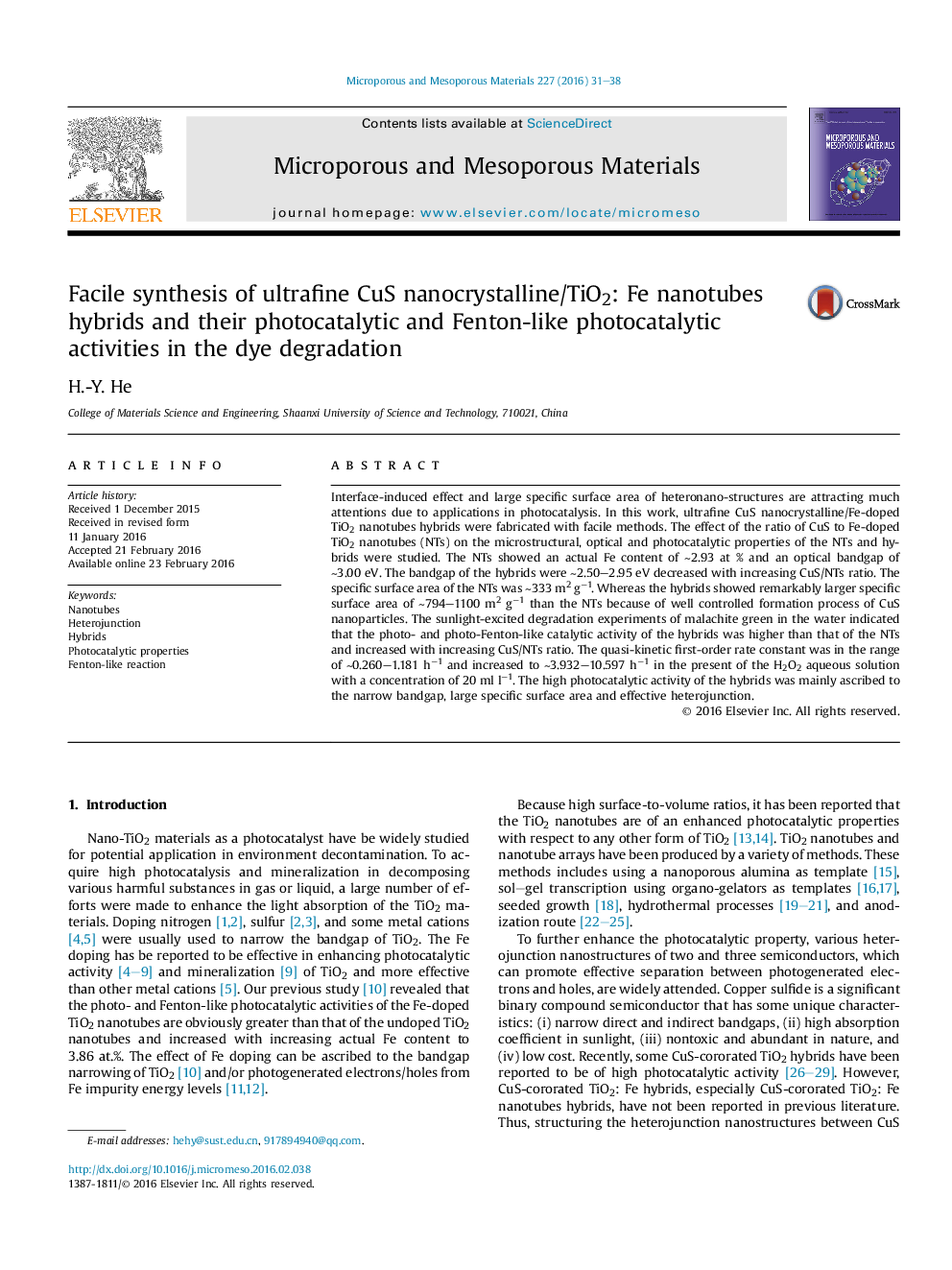| Article ID | Journal | Published Year | Pages | File Type |
|---|---|---|---|---|
| 72134 | Microporous and Mesoporous Materials | 2016 | 8 Pages |
•Ultrafine CuS nanocrystalline-decorated Fe-doped TiO2 nanotubes were fabricated.•The effect of CuS content and operation parameters on the photocatalytic activity were studied.•The Fe-doping and CuS-decoration narrow optical bandgap to ∼2.50–3.00 eV.•The hybrids showed very large specific surface area of ∼333–1100 m2 g−1.•The photocatalytic activity and Fenton-like reaction increased with increasing CuS content.
Interface-induced effect and large specific surface area of heteronano-structures are attracting much attentions due to applications in photocatalysis. In this work, ultrafine CuS nanocrystalline/Fe-doped TiO2 nanotubes hybrids were fabricated with facile methods. The effect of the ratio of CuS to Fe-doped TiO2 nanotubes (NTs) on the microstructural, optical and photocatalytic properties of the NTs and hybrids were studied. The NTs showed an actual Fe content of ∼2.93 at % and an optical bandgap of ∼3.00 eV. The bandgap of the hybrids were ∼2.50–2.95 eV decreased with increasing CuS/NTs ratio. The specific surface area of the NTs was ∼333 m2 g−1. Whereas the hybrids showed remarkably larger specific surface area of ∼794–1100 m2 g−1 than the NTs because of well controlled formation process of CuS nanoparticles. The sunlight-excited degradation experiments of malachite green in the water indicated that the photo- and photo-Fenton-like catalytic activity of the hybrids was higher than that of the NTs and increased with increasing CuS/NTs ratio. The quasi-kinetic first-order rate constant was in the range of ∼0.260–1.181 h−1 and increased to ∼3.932–10.597 h−1 in the present of the H2O2 aqueous solution with a concentration of 20 ml l−1. The high photocatalytic activity of the hybrids was mainly ascribed to the narrow bandgap, large specific surface area and effective heterojunction.
Graphical abstractUltrafine CuS nanocrystalline-modified Fe-doped TiO2 nanotubes showed a high photocatalytic and Fenton-like photocatalytic activities that increased with increasing CuS proportion and varied with initial pH. The high photocatalytic activity of the hybrids was mainly ascribed to the narrow bandgap, large specific surface area and effective heterojunction nanostructures.Figure optionsDownload full-size imageDownload as PowerPoint slide
